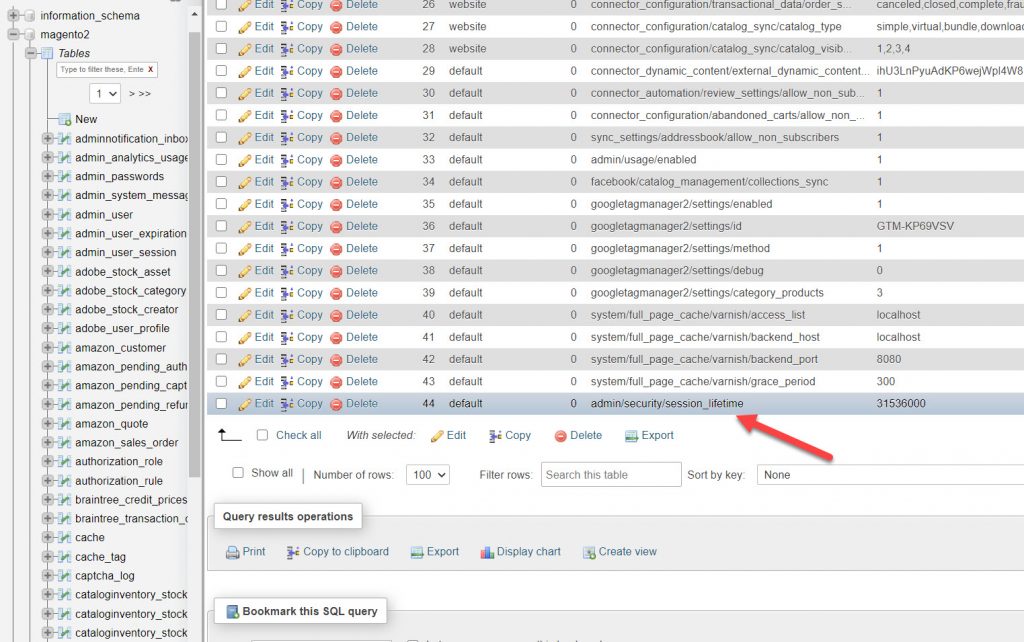

- #PHPMYADMIN SET UP HOW TO#
- #PHPMYADMIN SET UP UPDATE#
- #PHPMYADMIN SET UP SOFTWARE#
- #PHPMYADMIN SET UP CODE#
Some kits contain only the English messages, othersĬontain all languages.
#PHPMYADMIN SET UP HOW TO#
env file supplied with Laravel, how to run migrations in Laravel, and how to use composer to install the latest version of phpMyAdmin for use as a graphical user interface on our database. We learned a little bit about how to log into MySql on the virtual machine, how to show and create databases from the command line, how to configure the. This was a nice little tutorial covering some of the basic steps to take when getting ready to use Laravel with MySql as a database. Getting Your Database Set Up For Use With Laravel Summary So we have Laravel configured, MySql configured, and now we also have a nice GUI to work with by way of phpMyAdmin. Oh yeah! Look at that database with those tables that were created during the migration step we did earlier.

This will add our new v domain to the available sites. We’re almost done, but before the GUI becomes active, we need to run a vagrant provision command in the homestead directory of our local machine. This allows us to use these easy domain names in our browswer during local development.
#PHPMYADMIN SET UP UPDATE#
You’ll need to update the hosts file found at C:\Windows\System32\drivers\etc on a Windows machine using administrator privileges to something like the following. In this file below we have the default homestead.app site, 54.dev, and now we are adding the v site as well. We are actually installing phpMyAdmin as a new site in homestead, so let’s go ahead and update the settings in our Homestead.yaml file to reflect this.
#PHPMYADMIN SET UP SOFTWARE#
In our case the shared directory is C:/localdev, so what this will do is create a folder named phpmyadmin and install all of the software in that directory. Run the following command.Ĭomposer create-project phpmyadmin/phpmyadmin –repository-url= –no-dev In your terminal, visit the directory on the host machine, which is shared with the virtual machine. It’s easy to add phpmyadmin to Laravel homestead so let’s do that now. Sometimes, working with the command line interface for the database is a little clunky. We now have all the plumbing set up and configured for working with MySql. Laravel is now connected to and working with your local database. $table->timestamp('created_at')->nullable()
#PHPMYADMIN SET UP CODE#
Here is the code that created the Password Resets table.

Here is the code that created your Users Table increments('id') If you’re curious, here are the PHP files that built out those tables for us. Taking a trip back to our MySql console shows us the new tables in all of their glory.

Almost all web applications make use of something like this. As we can see below, when we run it, we do get a users as well as a password_resets table. When we run the command of php artisan migrate, this will actually trigger those built in PHP files to build a couple of helpful tables in our database. Migrations are a way of defining the Schema of database tables using PHP. We leave theĭB_USERNAME and DB_PASSWORD fields at their defaults. By default, the DB_DATABASE key is set to homestead, but we will change it to 54 for this example. Now that we have a specific database we want to use for our project, we can set the variables we need in the. If we show the databases again we see our new database. We want to create a custom database for this so we type create database '54' and note that we get a result of Query OK, 1 row affected. We see a few of them such as information_schema, homestead, mysql, performance_schema, and sys. Let’s go ahead and first look at what is in the database by typing show databases. Once you are logged in to the VM, you can easily go to the MySQL command line by simply typing mysql and hitting enter. Here, we SSH into the vitual machine to get ready to work with MySql. We are using Homestead in this tutorial, so take the steps to get that installed if you would like to follow along. Here we update our most recent practice repository. Thanks to Composer, keeping things up to date in your project is so simple. Laravel moves fast, and if you want to keep up to date with things, make it a practice to run a composer update from your project root every so often. We’ll take a look at both options in this tutorial. In addition, we can work with the database via the command line, or from a graphical user interface such as phpMyAdmin. MySql is far and away the most used option, so that is what we’ll look at here. You have many options to choose from such as sqlite, pgsql, redis, and mysql. Now that we’ve covered the most simple introduction to Laravel, let’s take a moment to get ready to work with a database so we can make use of the Query Builder or Eloquent.


 0 kommentar(er)
0 kommentar(er)
